We pride ourselves as purveyors of the highest quality Prime & Choice Dry Aged meat. Our meat is hand-selected from the finest USDA suppliers and we accept only the very highest quality. Fresh product arrives daily and we carefully dry age it “on the hook” in specially designed coolers.
Our professional butchers cut all of our meats and poultry the old-fashioned way. We pay meticulous attention to trimming and wrapping your selections to your specifications.
We know you want to eat well. We believe that our products exceed those of other retail outlets. Browse our online serving and cooking guides for inspiration and instructions. We assure you that with Prime Time as your butcher, your cooking will outshine your favorite steakhouse or gourmet restaurant.
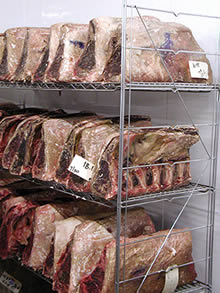 Dry Aging
Dry Aging
At Prime Time Butcher, we always dry age all of our Beef, Lamb and Veal to achieve optimum tenderness, texture and flavor.
Dry Aged Beef
Dry aging on the hook allows two important changes to occur. First, moisture evaporates from the muscles of the meat, and second, the natural enzymes break down the connective tissue in the muscles. This process enhances the Beef creating an extremely tender and flavorful product.
Up to 20% of Beef’s original weight is lost during aging. Prime Time Butcher ages its Beef 18-22 days in coolers that maintain a specific temperature, humidity level and airflow. Dry aging is a time consuming and expensive process, but well worth the effort.
Lamb & Veal
Dry aging Lamb and Veal is a similar process to dry aging Beef. These products are naturally tender and this decreases the hanging time in the cooler.
The Difference Between Dry Aging and Wet Aging
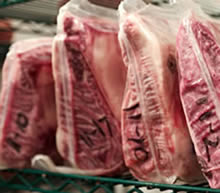
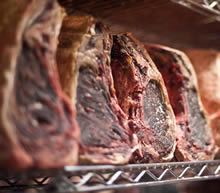
Most meat in the retail markets is wet aged or aged-in-the-bag. This method involves having meat sealed in plastic bags for 7-28 days. Wet aging can be problematic because meat sits in it own juices and cannot develop flavor because there is no opportunity for moisture loss.
According to expert Rob Walsh of the Houston Press, “Most people tend to describe the taste of wet aged steaks as ‘bloody’ or ‘metallic’ compared to the ‘dry’ and ‘nutty’ flavor of dry-aged beef.”
In today’s market there are few retail outlets that allow meat to dry age for extended periods of time. We believe the quality of our dry aged products transcends the time and cost.
What are Meat Grades?
Regardless of grade, some cuts of meat are more naturally tender than others. Cuts from the less-used muscles along the back of the animal such as the rib and loin sections are always more tender than those from the more active muscles such as the shoulder, flank, and leg. The tenderest cuts make up only a small portion of Beef or Lamb. These cuts are in greatest demand and command a higher price.
Each USDA Beef Grade is a measure of a distinct level of quality. There are eight grades that span the range: USDA Prime, Choice, Select, Standard, Commercial, Utility, Cutter and Canner.
USDA Prime, Choice, Select, and Standard grades come from younger cattle than lower grades.
The highest, USDA Prime, is selected from younger cattle that have abundant marbling. USDA Prime is consumed primarily by restaurateurs, but a small amount is protected for sale to the finest retail markets.
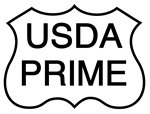 | USDA Prime: Prime Grade Beef is a superb selection and considered the “Gold Standard” of meat cuts. Dry aging and marbling combine to give this highest grade an impressive intensity of flavor, texture and moistness. We recommend dry-heat cooking methods such as roasting, grilling or broiling to ensure outstanding results with a Prime Roast or Prime Steaks. |
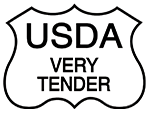 | Premium Angus: USDA Premium Angus, renowned for its exceptional quality, stands just one small step below the prestigious USDA Prime grade. This grade signifies a remarkable level of marbling and tenderness in the beef, making it a top choice for those who appreciate a high-quality dining experience, with a lower price tag. |
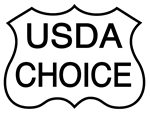 | USDA Choice: USDA Choice is the most common grade sold in retail venues. Our Choice meat cuts are dry aged, giving them the same distinct advantage as Prime.Choice cuts contain less marbling than Prime Grade resulting in a lower fat to lean ratio. Choice meat from the loin and rib can be flavorful and is suited to dry-heat cooking. Less tender cuts from the rump, round, and blade chuck can also be prepared with a dry heat source. |
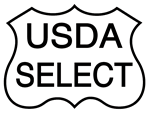 | USDA Select: Select Grade Beef is quite uniform in its lean and dry quality. Select lacks the juiciness and flavor of higher grades. |
Meat Grading: How it translates into taste…
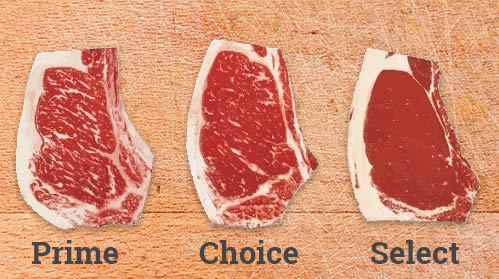
USDA Prime
Outstanding quality, highly marbled, the richest, most tender, juicy and flavorful of cuts.
Premium Angus
Outstanding economical quality, slightly less marbled than prime, with a rich flavor profile and remarkable tenderness.
USDA Choice
Flavorful, more elemental in taste and tenderness, but vastly improved by our dry aging method.
USDA Select
A lean, economic grade.
Portions of the above are attributed to: http://www.ams.usda.gov. Refer to this website for additional information.
National Summary of Meat Graded (Number of Cattle)
Fiscal Year 2017
Quality Grade | Total Head of Cattle Graded | Percent of all Quality Graded | Percent of total Processed |
Prime | 1,481,864 | 6.1 % | 5.8 % |
Choice | 18,142,003 | 74.8 % | 70.7 % |
Select | 4,570,582 | 18.9 % | 17.8 % |
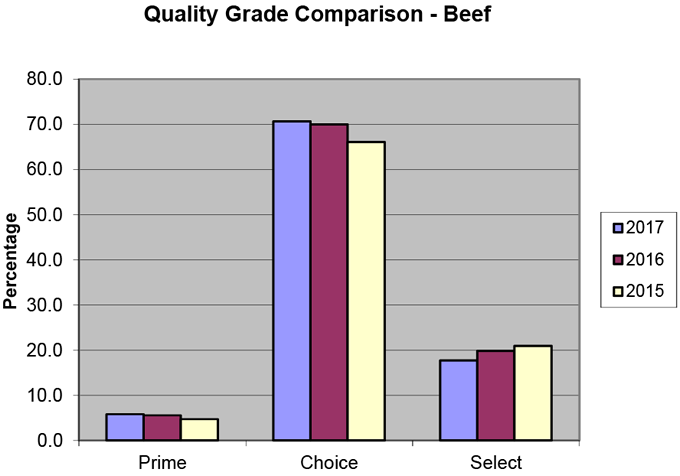
Abridged chart from: https://www.ams.usda.gov/reports/meat-grading.
